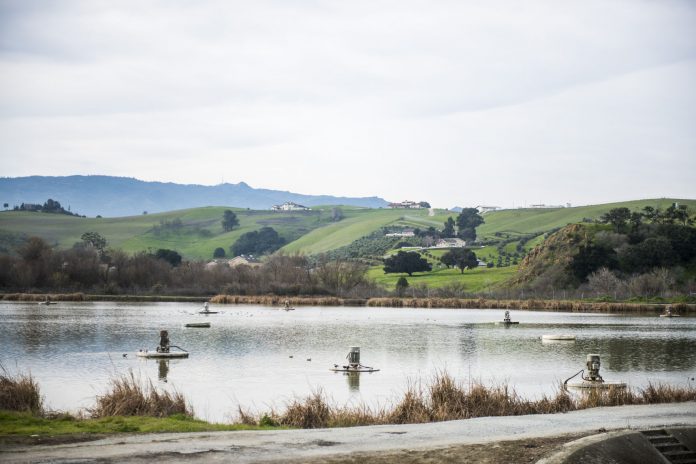
A technical report from the City of Hollister about two 2016 wastewater spills disputes that the first spill reached the San Benito River as previously reported.
On Jan. 13, the Central Coast Regional Water Quality Control Board issued the City of Hollister a notice of violation related to two 2016 wastewater spills discharged into the San Benito River bed. The first spill happened on or around July 26 and the second occurred Sept. 6. The water board required a submission of information, including a technical report, by Feb. 27. City staff requested an extended deadline to submit the information, which was granted, with the report turned in March 15.
Those two spills happened last summer, but city officials never issued a public notice about the matter. Instead, city staff filled the related leak of a diversion valve in a line from the San Benito Foods tomato cannery with inflatable plugs, one of which eventually failed. Council members approved an item relating to the replacement of the valve structure at a Jan. 17 meeting.
According to the technical report, city staff concluded the initial estimated sewer system overflow start date was incorrect and the result of a typographical error.
Initially, the city said the staff became aware of the spill July 16. However, July 26 was the actual date the city became aware of it, the report states.
“The change in the date of City staff identifying the (spill) is also a basis for a recalculated estimate for the volume of the spill,” the report reads. “The revised estimate is now calculated to be 345,600 gallons.”
The total spill volume for July 16, now July 26, was previously reported as 600,000 gallons. The spill amount was calculated based on an estimated flow rate of 15 gallons per minute, the report states. At 15 gallons per minute, 60 minutes per hour, 24 hours per day for a total of 16 days placed the total July spill volume at 345,600 gallons.
The water board’s notice of violation stated that approximately 200 gallons reached the San Benito River bed. However, the technical report states that the reported 200 gallons was an error.
“Staff observed process wastewater pooling approximately 20 feet beyond the second drainage ditch berm,” the technical report states. “The City’s understanding is the San Benito River begins approximately 60 feet from the second berm. Based on this information the City does not believe the July (spill) entered the San Benito River and was contained in the area identified as the drainage ditch.”
The total spill volume for Sept. 6 was 338,524 gallons, with 38,481 gallons that reached the river. The 38,481 gallons that reached the river aren’t disputed in the technical report.
The Sept. 6 spill occurred when the first installed plug failed. The technical report sheds light on how it failed.
“On the weekend of July 2-5 (Labor Day Weekend) the plug was not inspected by City on-call staff,” the technical report states. “During the three-day weekend, high temperature process wastewater from the tomato plant melted portions of the plug, causing the plug to fail and allow process wastewater into the City storm drain system, drainage ditch and San Benito River.”
That was consistent with comments made by City Manager Bill Avera during a County Chamber of Commerce Luncheon in February.
“The biggest mistake was that over Labor Day Weekend, one of our on-call personnel didn’t check the (inflatable plug) for three days,” Avera said at the time. “That was human error that should not have happened.”
The technical report goes on to say that the city plans to complete the installation of a pre-fabricated fiberglass structure to replace the failed diversion valve by May 26, 2017.
The two 2016 wastewater spills came nearly 15 years after 15 million gallons of wastewater spilled into the San Benito River bed and prompted the state to force Hollister to build a new, eight-figure treatment plant while enacting a building moratorium until its completion. The local economy was hit hard by the moratorium, which affected housing, industrial jobs and commercial development for more than a half-decade. At the time of the spill, city officials blamed the breach on a gopher hole.









